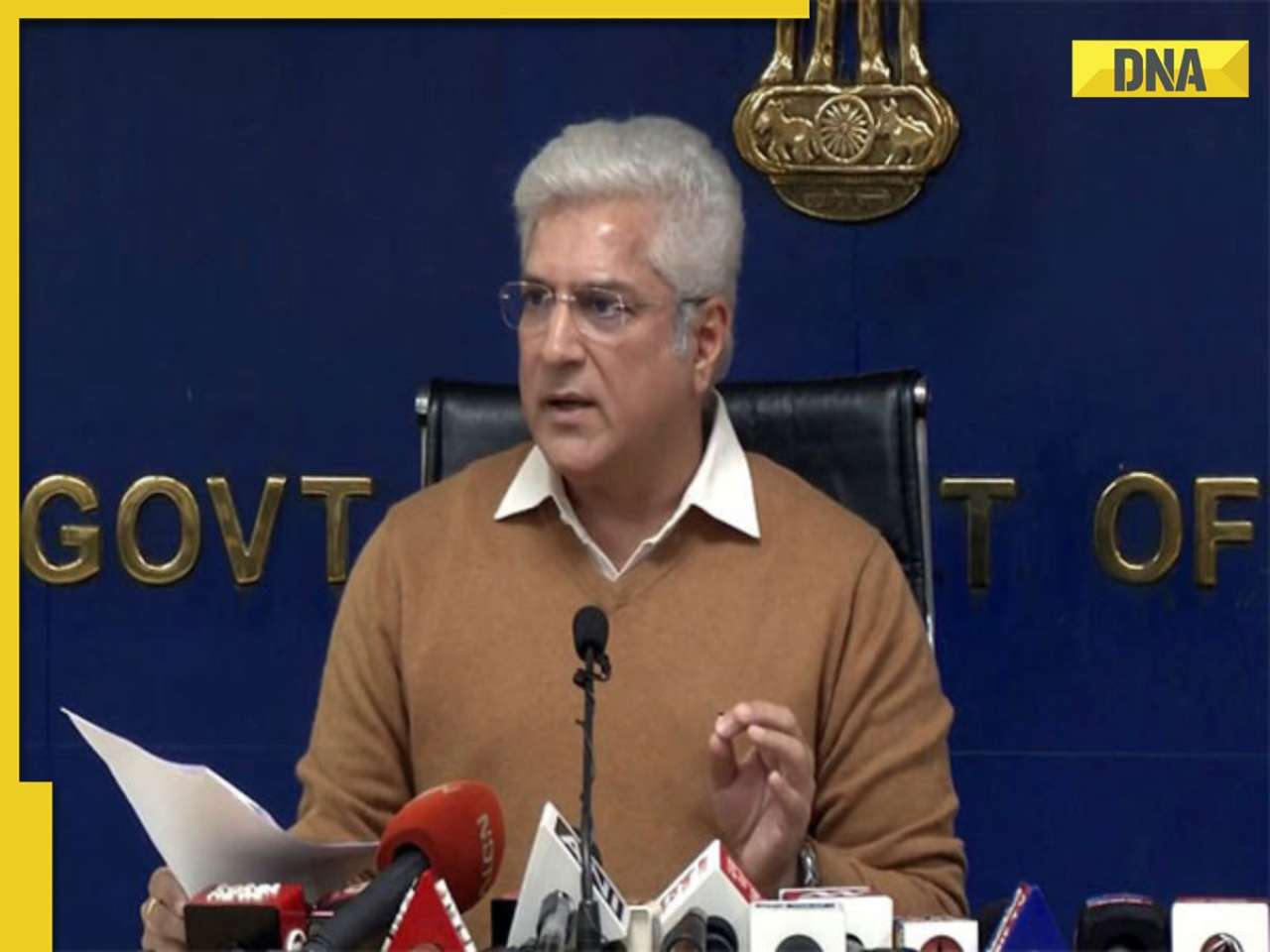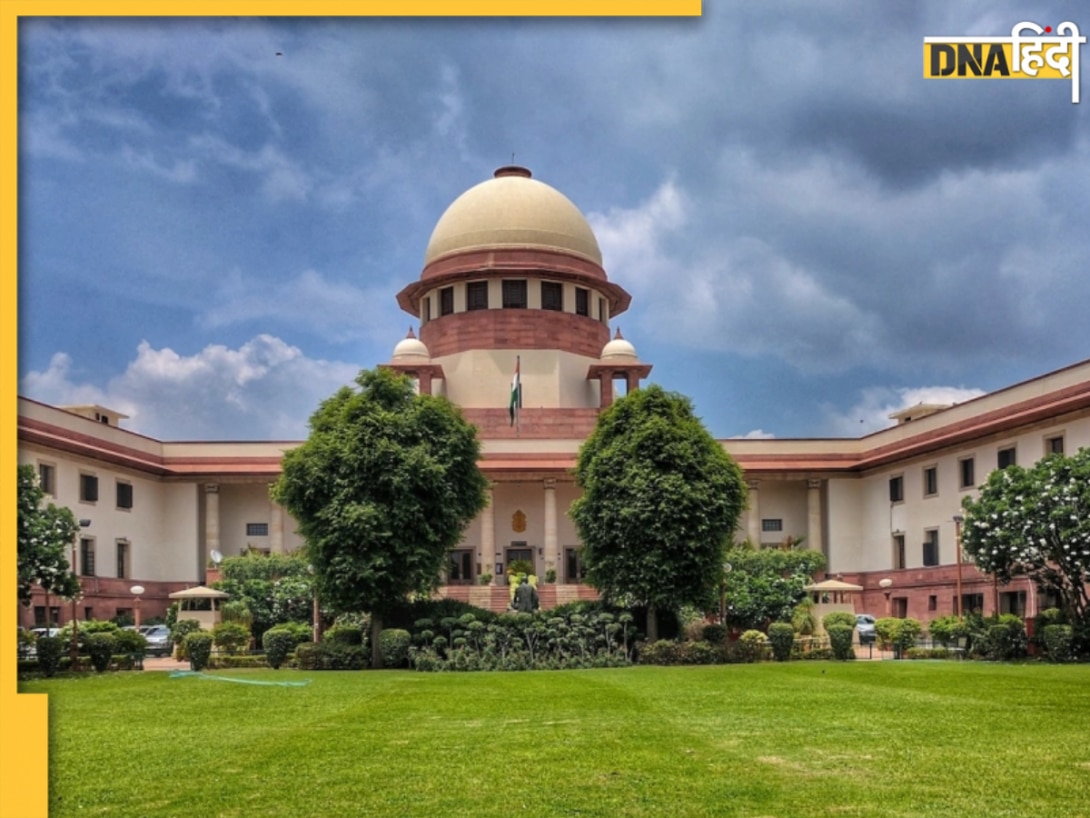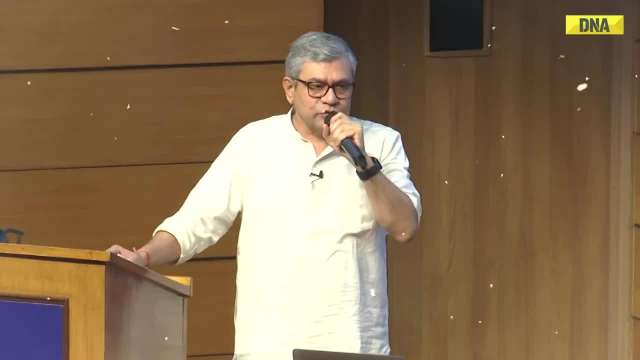Microzonation is identifies separate individual areas that are found to have different potentials for hazardous earthquake effects.
In an effort that would help mitigate the hazards of an earthquake, seismologists will come out with a micro-analysis of the risks faced by different parts of Delhi in the eventuality of a major tremor by April.
The zone-wise risk assessment of the impact of a quake on Delhi, among 30 Indian cities in the severe intensity seismic zone, is on in full steam at the India Meteorological Department (IMD).
Microzonation, as it is called, is carried out with the purpose of identifying separate individual areas that are found to have different potentials for hazardous earthquake effects.
The project, which is expected to be completed by April, would assess soil structure in various parts of the capital to give risk assessments on a zone-wise basis. Once completed, this will help in formulation of area-centric safety guidelines.
"Character of soil structure in Delhi is not uniform and with that varies the impact of an earthquake. To evaluate this, microzonation process at a map scale of 1:50,000 was done and a fresh process for further detailed microzonation in the 1:10,000 scale is on," R S Dattatrayam, a scientist with IMD's Seismic Department, told PTI.
This seismic microzonation would help seismologists categorise the soil type and structure of a particular region and assess the damage which might be caused to life or property in case of an earthquake.
Based on this microzonation data, the National Disaster Management Authority (NDMA) will be coming out with specific area-centric safety guidelines.
NDMA Vice-Chairperson Shashidhar Reddy said 240 engineers of Municipal Corporation of Delhi will also be trained to detect vulnerable structures in high-risk areas based on the new microzonation data.
According to the Seismic Zone Mapping done by the Geological Survey of India (GSI), Delhi is among 30 cities in the country falling in zone IV, which is defined as a severe intensity seismic zone.
An earthquake of 6 to 8 Richter scale magnitude in the Himalayas could trigger tremor shock in Delhi of up to 8 MMI (Modified Mercalli Intensity scale), Dattatreyam said.
On the Mercalli Intensity Scale, a similar earthquake in the Himalayas could result in slight damage in specially designed structures in Delhi and considerable damage in ordinary substantial building.
Focusing on the northern and central parts of India, which will have a direct effect on Delhi in terms of tremors and shock waves, basic microzonation of particularly vulnerable areas has also been conducted in Jabalpur and Dehradun.
Other than in Delhi, Dattatreyam said, the process of microzonation has begun for 30 other cities, including Mumbai, Ahmedabad, Siliguri, Vishakhapatnam, and Guwahati, as per standard guidelines set for this exercise.
This year, till February 16, there were 15 earthquakes in India, the latest being recorded at 5.0 on the Richter scale off the West Coast of Great Nicobar Islands--the most pro-active seismic region in the country.
According to IMD, there were 80 earthquakes in India in 2011, which measured between 3.5 to 6.5 on the Richter scale.
A majority of these quakes occurred in the northern Indian regions of Jammu and Kashmir, Harayana and Punjab.
![submenu-img]() Verantes Living Awarded as India’s No.1 Stainless Steel Modular Kitchen Brand
Verantes Living Awarded as India’s No.1 Stainless Steel Modular Kitchen Brand![submenu-img]() Narayana Murthy’s Infosys set to invest Rs 170000000 in this startup
Narayana Murthy’s Infosys set to invest Rs 170000000 in this startup![submenu-img]() 'Towards reducing pollution..': Delhi govt approves replacement, induction of electric vehicles in 'Gramin Sewa'
'Towards reducing pollution..': Delhi govt approves replacement, induction of electric vehicles in 'Gramin Sewa'![submenu-img]() Discover Stainless France, the Leading Supplier of Cobalt Chrome
Discover Stainless France, the Leading Supplier of Cobalt Chrome![submenu-img]() Kritika Kamra says men should take responsibility for fighting sexism: 'There's a thin line between...'
Kritika Kamra says men should take responsibility for fighting sexism: 'There's a thin line between...'![submenu-img]() हाईकोर्ट के जज ने मुस्लिम इलाके को बताया 'मिनी पाकिस्तान', सुप्रीम कोर्ट ने लगाई कड़ी फटकार, जानें पूरी बात
हाईकोर्ट के जज ने मुस्लिम इलाके को बताया 'मिनी पाकिस्तान', सुप्रीम कोर्ट ने लगाई कड़ी फटकार, जानें पूरी बात![submenu-img]() SC का यूट्यूब चैनल हुआ हैक, चलने लगा अमेरिकी क्रिप्टोकरेंसी का ऐड, कोर्ट ने NIC से मांगी मदद
SC का यूट्यूब चैनल हुआ हैक, चलने लगा अमेरिकी क्रिप्टोकरेंसी का ऐड, कोर्ट ने NIC से मांगी मदद![submenu-img]() Astronaut sunita williams ने अंतरिक्ष में मनाया बर्थडे, पढ़ाई और स्पेस स्टेशन की मरम्मत कर खास बनाया दिन
Astronaut sunita williams ने अंतरिक्ष में मनाया बर्थडे, पढ़ाई और स्पेस स्टेशन की मरम्मत कर खास बनाया दिन![submenu-img]() पाकिस्तानी सेना पर दक्षिणी वजीरिस्तान में बड़ा हमला, 6 जवानों की मौत, कई जख्मी
पाकिस्तानी सेना पर दक्षिणी वजीरिस्तान में बड़ा हमला, 6 जवानों की मौत, कई जख्मी![submenu-img]() RITES shares: रेलवे PSU के शेयर में आज 48% की गिरावट क्यों देखी जा रही है, समझें पूरा मामला
RITES shares: रेलवे PSU के शेयर में आज 48% की गिरावट क्यों देखी जा रही है, समझें पूरा मामला![submenu-img]() Ford to return to India after 2 years with reopening of....
Ford to return to India after 2 years with reopening of....![submenu-img]() Maruti Suzuki launches new Swift CNG, check price, mileage, other features
Maruti Suzuki launches new Swift CNG, check price, mileage, other features![submenu-img]() ‘30 LPA, 3BHK, no in-laws’: Woman earning Rs 1.32 lakh salary lists demands for future husband, netizens say...
‘30 LPA, 3BHK, no in-laws’: Woman earning Rs 1.32 lakh salary lists demands for future husband, netizens say...![submenu-img]() In a big EV push, Centre launches Rs 10900 crore PM E-Drive scheme to replace…
In a big EV push, Centre launches Rs 10900 crore PM E-Drive scheme to replace…![submenu-img]() World’s longest car has helipad, swimming pool, mini-golf course, can seat over…; it cost…
World’s longest car has helipad, swimming pool, mini-golf course, can seat over…; it cost…![submenu-img]() Meet IPS officer who has resigned after serving for 18 yrs due to...
Meet IPS officer who has resigned after serving for 18 yrs due to...![submenu-img]() Meet Indian man, who got hired whopping Rs 12000000 crore salary job, not from IIT, IIM he is...
Meet Indian man, who got hired whopping Rs 12000000 crore salary job, not from IIT, IIM he is...![submenu-img]() Meet woman who left medical career for UPSC exam , became IPS with AIR 165 then left job due to...
Meet woman who left medical career for UPSC exam , became IPS with AIR 165 then left job due to...![submenu-img]() Meet man, who left NDA due to depression, then cracked UPSC exam to become IAS officer, his AIR was...
Meet man, who left NDA due to depression, then cracked UPSC exam to become IAS officer, his AIR was...![submenu-img]() Meet youngest CEO of India, who created first app at 9, began his own company at 13, now he is…
Meet youngest CEO of India, who created first app at 9, began his own company at 13, now he is…![submenu-img]() Congress President Kharge Slams & Opposes 'One Nation, One Election' Proposal, Calls It Impractical
Congress President Kharge Slams & Opposes 'One Nation, One Election' Proposal, Calls It Impractical![submenu-img]() Why 'One Nation One Election' Is important? Ashwini Vaishnaw Explains After It Gets Cabinet Approval
Why 'One Nation One Election' Is important? Ashwini Vaishnaw Explains After It Gets Cabinet Approval![submenu-img]() Jammu Kashmir Assembly Election 2024 Phase 1 Highlights: What Happened In First phase In J&K Polls?
Jammu Kashmir Assembly Election 2024 Phase 1 Highlights: What Happened In First phase In J&K Polls?![submenu-img]() One Nation One Election: Centre Clears Proposal, Bill To Be Introduced In Winter Session | Modi 3.0
One Nation One Election: Centre Clears Proposal, Bill To Be Introduced In Winter Session | Modi 3.0![submenu-img]() Haryana Elections 2024: Is BJP Set To Lose In Haryana? Anti-Incumbency And Other Factors Analysed
Haryana Elections 2024: Is BJP Set To Lose In Haryana? Anti-Incumbency And Other Factors Analysed![submenu-img]() Verantes Living Awarded as India’s No.1 Stainless Steel Modular Kitchen Brand
Verantes Living Awarded as India’s No.1 Stainless Steel Modular Kitchen Brand![submenu-img]() Narayana Murthy’s Infosys set to invest Rs 170000000 in this startup
Narayana Murthy’s Infosys set to invest Rs 170000000 in this startup![submenu-img]() Discover Stainless France, the Leading Supplier of Cobalt Chrome
Discover Stainless France, the Leading Supplier of Cobalt Chrome![submenu-img]() ITR filing: Haven’t received your income tax refund yet? Here’s what you should do
ITR filing: Haven’t received your income tax refund yet? Here’s what you should do![submenu-img]() Meet ‘delivery boy’ who beats Mukesh Ambani in world’s billionaire list, his net worth is…
Meet ‘delivery boy’ who beats Mukesh Ambani in world’s billionaire list, his net worth is…![submenu-img]() In pics: Saiyami Kher conquers Ironman triathlon in Germany, swims, cycles, runs to complete endurance races
In pics: Saiyami Kher conquers Ironman triathlon in Germany, swims, cycles, runs to complete endurance races![submenu-img]() Meet IAS officer, who cracked in UPSC exam along with full-time job, her AIR was...
Meet IAS officer, who cracked in UPSC exam along with full-time job, her AIR was...![submenu-img]() In pics | India vs Bangladesh 1st Test, Day 1
In pics | India vs Bangladesh 1st Test, Day 1![submenu-img]() From Mechuka to Hayuliang village: Explore lesser-known destinations of Arunachal Pradesh
From Mechuka to Hayuliang village: Explore lesser-known destinations of Arunachal Pradesh![submenu-img]() From Simlipal National Park to Mahendragiri: Top 6 hidden gems to discover in Odisha
From Simlipal National Park to Mahendragiri: Top 6 hidden gems to discover in Odisha![submenu-img]() 'Towards reducing pollution..': Delhi govt approves replacement, induction of electric vehicles in 'Gramin Sewa'
'Towards reducing pollution..': Delhi govt approves replacement, induction of electric vehicles in 'Gramin Sewa'![submenu-img]() More trouble for ex-RG Kar principal Sandip Ghosh, Bengal medical body now...
More trouble for ex-RG Kar principal Sandip Ghosh, Bengal medical body now...![submenu-img]() Tirupati Laddu row: Lab report confirms prasada contains beef fat, fish oil
Tirupati Laddu row: Lab report confirms prasada contains beef fat, fish oil![submenu-img]() Delhi: Water supply to be shut down in capital for 12 hours tomorrow due to…; check list of affected areas
Delhi: Water supply to be shut down in capital for 12 hours tomorrow due to…; check list of affected areas![submenu-img]() FATF says India faces severe 'terrorist financing threats' from...
FATF says India faces severe 'terrorist financing threats' from...











































)
)
)
)
)
)
)
)
)
)
)
)
)
)





)
)
)
)
)
)